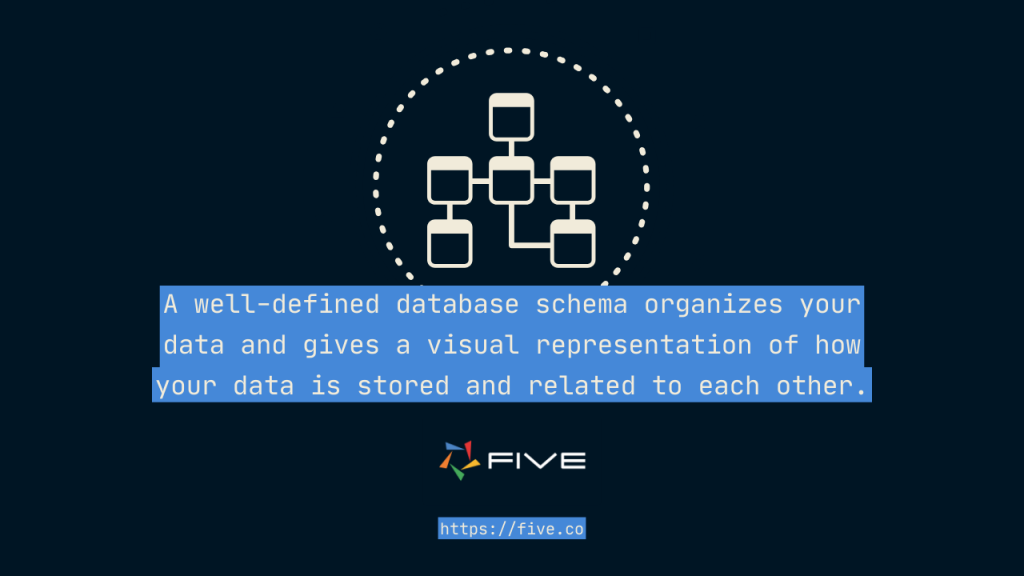How To Create an Online Searchable Database
Here’s How to Rapidly Create an Online Searchable Database
Managing data efficiently is crucial for any business. However, managing data efficiently in an online searchable database with a user-friendly graphical user interface is easier said than done.
It involves at least four steps:
- Planning a database,
- Creating an online database,
- Populating the database with data, and
- Building a search interface.
In this guide, we’ll walk you through the process of building a robust online searchable database using SQL and relational databases. First, we will map out the traditional, slow way. Then we will present a much faster and cost-efficient alternative using Five.
Let’s begin!
If you are entirely new to relational databases and SQL, let’s understand the basics first. SQL and relational databases, are the two foundational building blocks to creating an online searchable database.
What is SQL?
Structured Query Language (SQL) is the standard programming language for managing and manipulating relational databases. Understanding SQL basics is essential for building a powerful and efficient online searchable database. To learn SQL, we recommend W3 School’s free SQL tutorial.
Why Choose a Relational Database?
Relational databases offer a structured way to organize data into tables, providing a clear and efficient method for data retrieval and management. This is much more efficient, and consequently faster than storing information in a spreadsheet, for example. Commonly used relational databases are MySQL, Microsoft SQL Server, or PostgreSQL.
It doesn’t matter so much which relational database you choose. What matters is understanding how they work. Relational databases store data in related tables. Relationships between tables can be many-to-many relationships, one-to-many relationships, or one-to-one relationships. These relationships are created through the use of foreign keys.
Planning Your Database
Define Your Objectives
Clearly outline the purpose and goals of your online searchable database. What is the database about? Customers? Orders? Products? Be clear on the database’s purpose, and define its objectives clearly. Our advice: define your objectives narrowly at the start and don’t go overboard with what your database is trying to accomplish in its first iteration.
Identify the types of data you’ll be handling, potential relationships between data tables, and the specific information users will search for.
Expert Tip: Our Library of Ready-to-Use Database Applications
We have a library of ready-to-use database applications, such as a customer database, member database, supplier database, or accounting database. Sign up now to access our ready-to-use template apps.
Design the Database Schema
Next, create a blueprint for your database by defining tables, fields, and relationships. You can do this using pen and paper, and without going into every detail about your database.
For example, think about your database tables first and how they are related. Map this out in an Entity-Relationship-Diagram (ERD). Test your assumptions by thinking through your table structure from multiple angles. Next, add the fields to each table, and define what their data types are (strings, numbers, floats, etc.).

The Traditional (Slow) Way to Create a Searchable Database
1. Setting Up Your SQL Database
Choose the Right Database Management System (DBMS)
Select a reliable DBMS that aligns with your project requirements. Popular choices include MySQL, PostgreSQL, and Microsoft SQL Server. Each has its strengths, so choose one that suits your needs.
Install and Configure Your DBMS
Follow step-by-step instructions to install and configure your chosen DBMS. For example, a popular tool to work with MySQL databases is MySQL Workbench. PostgreSQL and Microsoft SQL Server come with their own set of tools.
2. Creating Tables and Relationships
Writing SQL Statements
Learn SQL to create tables, specifying data types, constraints, and relationships. Writing these statements can be done in MySQL Workbench, for example.
Establishing Relationships
Define relationships between tables using primary and foreign keys. This step is crucial for creating a connected and searchable database!
3. Populating Your Database
Inserting Data
Explore SQL Data Manipulation Language (DML) to insert data into your tables. Follow best practices for maintaining data integrity.
Testing Your Database
Ensure that your database is populated correctly by running test queries. Address any issues or inconsistencies in the data.
4. Building a Search Interface
Choosing a Development Stack
Select a technology stack for building your search interface. Consider using web development frameworks like Django, Ruby on Rails, or Flask for seamless integration with your SQL database.
Implementing SQL Queries for Search
Build SQL queries that enable efficient and accurate data retrieval. Optimize queries to enhance search speed and performance.
5. Ensuring Security and Scalability
Implementing Security Measures
Secure your database by setting up user roles, permissions, and encryption. Protect against SQL injection attacks and unauthorized access by defining password policies, governing access, and defining CRUD permissions.
Planning for Scalability
If your database is growing quickly, consider setting up a future growth and plan for scalability. For example, you can optimize your database structure and indexing for performance as data volume increases.
Creating an Online Searchable Database: The Fast Track
Five is an online database builder that comes with everything required to develop and launch an online searchable database on the web. Five gives you:
- A MySQL database, which you can create and inspect visually.
- An easy way to add data to your database is by importing CSV files.
- An auto-generated user interface with a search bar and pre-configured filters.
- Everything you need to govern access to your data (authentication, roles, and permissions).
- A cost-effective way to launch your database to the web at just US$29.99 per month.
- Last, Five also handles the difficult bits and pieces of database design for you, such as setting up Foreign and Primary Keys or making database changes.
There are several advantages to using Five instead of following the traditional way of creating your searchable database:
- Instead of relying on several tools, Five is a all-in-one tool for creating, maintaining, and launching a searchable online database.
- You have to spend zero time on creating your front-end user interface. Instead, Five creates the user interface with your search bar and filters for you.
- Do deployment, setting up, and maintaining database servers hold you back? Five manages the entire deployment process for you. To get your database online, all you have to do is sign up for one of our subscription plans and click the “Deploy” button.
To create your first database app, follow this beginner-friendly guide on how to convert an Excel spreadsheet to a web app, which takes you through all the steps of creating an online searchable database, using data imported from spreadsheets as an example.
Conclusion
Creating an online searchable database using SQL and relational databases is a powerful way to streamline data management and retrieval. By following this comprehensive guide, in which we’ve presented two ways to create an online searchable database, you’ll be well-equipped to build a robust system that meets your specific needs. Stay organized, adhere to best practices, and unlock the full potential of your data with a well-designed and searchable database.


